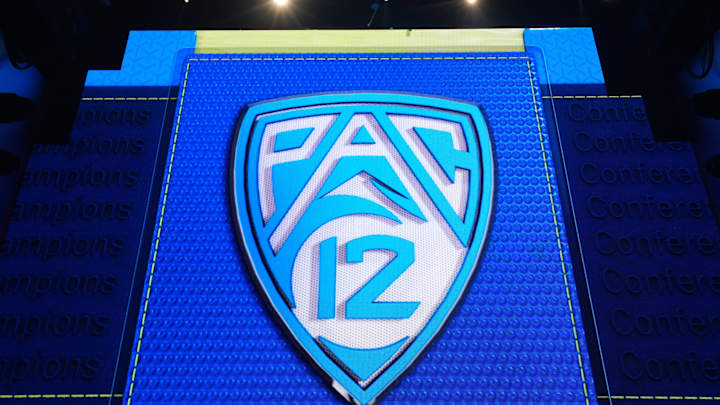Realignment Strikes Again: 26 Days Until Kansas Football

Editor's Note: Today's normal article would be a positional preview. Given the massive importance of the realignment news, the cornerback preview will publish later this week.
It isn't often where you can state that a day altered the course of history in a particular field and not be exaggerating for effect. Friday was one of those days. The announcement of Oregon and Washington heading to the Big Ten, followed shortly by the official announcement of Arizona, Arizona State and Utah heading to the Big 12 and the subsequent death of the Pac 12 (at least as a power conference) will likely transform everything we know about the college sports world.
A Truly Unique Situation
It may seem like the defection of multiple Pac 12 schools and the decimation of the conference was inevitable. But we've seen major conferences on the brink before, and somehow they've always seemed to survive. The Big 12 staved off dissolution multiple times, first when Nebraska and Colorado left, then when Missouri and Texas A&M left, and finally when Oklahoma and Texas left. Each time, the conference flirted with a brief period where it seemed like the whole conference was going to collapse, but they pivoted and found a way to make it work.
Many people will point to the Big East as a somewhat recent example, but I would disagree. The Big East was always a collection of schools with two distinct factions: those that played Division 1 football and those that didn't. While the conference disintegrated, it was actually more of a split of two incompatible halves into two different conferences. It's similar but not quite the same.
The split of the Southwest Conference, which led directly to the creation of the Big 12, was the closest we have really been to this sort of event, but that also happened directly as a result of the fallout from the NCAA vs Oklahoma Board of Regents decision that opened up college broadcasts to ridiculous amounts of television money.
A Quick Collapse
Despite the numerous missteps from the Pac 12, it wasn't even clear a week ago that they were definitely going to collapse. Colorado's departure made that more likely, but there was a pathway to survival even if Arizona left. But ultimately, the catastrophic gamble from George Kliavkoff that he could wait out the rumors to give himself the maximum amount of time to cobble together an acceptable media deal came due.
The Big Ten would only be held at bay for so long. The Big 12 had made it known publicly that they would welcome any reasonable opportunity to expand. The schools in the Pac 12 had been somewhat privately voicing their displeasure with Kliavkoff while publicly touting their commitment to each other. All the signs were there for a move, but it was hard to know for sure if someone was going to pull the trigger.
It's one thing to talk about the options and be happy that you have a place to go. It's quite another to up and leave a conference that has been your home for a long time and actually make the leap.
A Huge Win for the Big 12 (and Kansas)
I understand why many in the national media are upset that the Pac 12 has finally collapsed. Whenever something that rich in history and tradition disappears, it is ok to be a bit sad about it. But in an increasingly cutthroat world of college sports, it is also impossible to view this as anything but a win for the Big 12.
While it is true that the Big 12 lost out on some of its ceiling when Oklahoma and Texas decided to leave to head to the SEC, it's impossible to ignore just how far the floor has risen for the conference. The conference was always thought of as the Sooners and Longhorns and a bunch of other teams. Sure the teams were pretty good across the board (minus Kansas and Iowa State for quite some time), but if those two weren't competing nationally, then the conference wasn't worth anything to many. And Texas (and to some degree Oklahoma) had been struggling mightily. If those two ever moved on, the consensus was that the conference would collapse. This was especially true after they decided not to expand back in 2016 (a situation that many in the know have told me was heavily driven by Oklahoma and Texas not wanting to share any more money).
Instead, the conference traded those two for 8 new schools: the three most consistent programs in the American, widely considered the best of the G5 leagues; a national brand in BYU; an old conference-mate with an intriguing head coach in Colorado; and three more Power 5 programs, including the back-to-back Pac 12 champions. In doing so, they not only expanded the roster with the best available options, but they created stability where there was none before and established themselves as the clear number 3 football conference in the nation.
Sure, the overall payout is less than what it could have been if the Sooners and Longhorns had stayed. But it is still higher than the prior deal, which wasn't guaranteed when those two left. And they were able to expand to 16 members without decreasing the payout at all.
There are still a lot of uncertainties in the college football world. This round of realignment has to finish before we truly know where the Big 12 stands. But barring a complete breakaway from the NCAA by the SEC and Big Ten, it is hard to imagine that anyone in the Big 12 is in a worse position than they were just two years ago.
Follow Us: Twitter | Instagram | Discord | Rock Chalk Podcast
